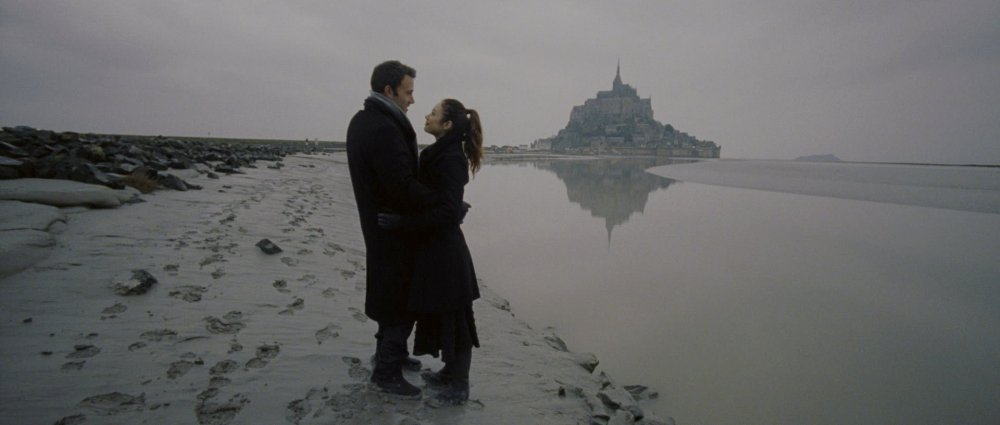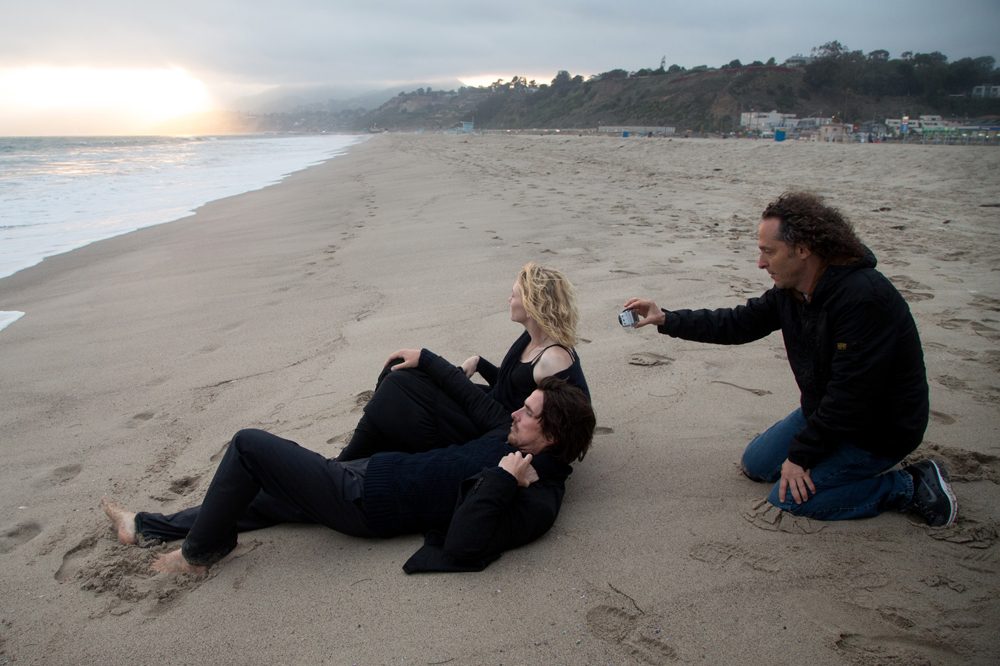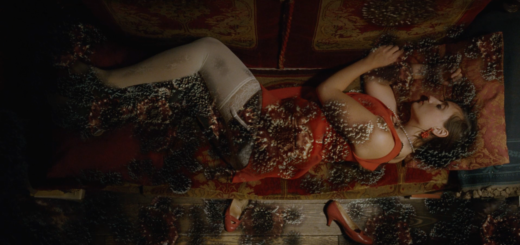Malick and Me: TO THE WONDER and KNIGHT OF CUPS
A cloudy day in Southern California, slight fortuitous drizzle, and a slight chill in the air. Today’s the final stop on my tour through Malick’s narrative filmmaking career, and, alas, my nostalgic tour through some fond memories of the last several years of my life (that is, until Malick creates more for me). Before I delve into my viewings of TO THE WONDER and KNIGHT OF CUPS, I would like to proudly reference Mr. Richard Brody—film critic for The New Yorker magazine—regarding his viewing of Godard’s BREATHLESS in college: “I came out [of the theater] as if I had had my atoms changed.” And I thank him for having uttered so perfect a sentence that, as succinct as it may be, aptly describes my own experience with Malick, rather than Mr. Brody’s with Godard. I had had my atoms changed since THE TREE OF LIFE, had had them adapted with THE THIN RED LINE, had had them enraptured with BADLANDS and DAYS OF HEAVEN, benevolently intoxicated with THE NEW WORLD: this alteration becomes a near fateful occurrence before my viewings of TO THE WONDER and KNIGHT OF CUPS (and, now, SONG TO SONG).
Malick’s oeuvre speeds into the present day in his 2012 film TO THE WONDER, starring Ben Affleck, Olga Kurylenko, Rachel McAdams, and Javier Bardem. Affleck plays Neil, a brooding American abroad in Paris, whose love finds a partner in Marina (Kurylenko), whom he will take back to his Oklahoman home, along with Marina’s 10-year-old daughter, Tatiana. Romance flows ever freely, however, within a brief spell of time, Marina’s settling down in Midwestern United States—the antithetical region to the City of Love—takes a serious toll on her relationship with Neil and her daughter . . . Things fall apart. The irenic local priest, Father Quintana (Bardem), consoles Marina when she begins to visit on a regular basis. Father Quintana offers solace; however, he himself suffers from the old crisis of spirit: a man of providence he once was, now veering off the road. Marina’s visa eventually expires, forcing her and Tatiana back across the Atlantic, whereupon Jane (McAdams)—a wholesome daughter of the Midwest, Neil’s childhood friend—reconnects with the forlorn Neil; romance ensues, precariously. The film’s location—Bartlesville, Oklahoma—also offers fodder for autobiographical intrigue: Malick grew up there. And the principle plot point—Neil’s romance with Marina—spawned from Malick’s meeting his second wife, Michele Morette, on a sojourn in Paris in the 1980s; the couple also lived in Oklahoma prior to their divorce. C’est la vie.

TMZ: Another Affleck Affair!
Previous pieces I had written on Malick featured anecdotes relating to my experiences watching the man’s films—their particular effects on particular journeys which have occurred within the past several years of my life, but no such journey can be paired alongside TO THE WONDER. Rather, my viewing of the 2012 film can be contained to the dark recess of my bedroom, on a 13 inch screen, on a bitter winter night in which I longed for romance (but don’t get the wrong idea). I began the film at nine o’clock, hoping I’d have the wherewithal to remain cogent for the running time, despite heavy eyelids and prior ingestion of somnific cough medicine; I did, and then some: the divine presence had been awakened. My spirits wandered into a vaguely foreign, slightly familiar cathedral . . . Where was the Malick of BADLANDS and DAYS OF HEAVEN? the Malick of THE THIN RED LINE, THE NEW WORLD? I saw glimpses of him in THE TREE OF LIFE, but now, now he seems to have dissipated into thin air; yet I will wait—despite my ingestion of Triaminic Children’s Multi-Symptom Fever and Cold Suspension Grape Medicine, I will patiently wait. And to this day I’m glad I did. I’m grateful I resisted the urge to close my laptop, brood, pace, read, turn the light on, off, on, perform 10 pushups, etc., in vain attempt to fall asleep quicker. New Wave Malick had constructed a New Wave cinematic cathedral, an evolved creation, an impressionistic painting, a painting vastly different from the theatrically modernist BADLANDS, DAYS OF HEAVEN, THE THIN RED LINE, and THE NEW WORLD. I felt as if I had entered a cathedral or perhaps even a museum, wherein I could sit in peace and deliberate on topics so often ignored in day-to-day life: love and betrayal, failure, spirituality, and providence.
The above sentiment becomes wholly applicable with regards to my viewing of Malick’s 2015 film KNIGHT OF CUPS, starring Christian Bale, Cate Blanchett, and Natalie Portman. Mr. Bale plays Rick, a successful but spiritually eviscerated screenwriter who finds solace, pro tempore, in the salacious debauchery embraced by those in Hollywood and Las Vegas. Malick segments the film into chapters (named after tarot cards, except for the final chapter, Freedom), each one based upon Rick’s experiences with a particular person in his life: The Moon—Della (Imogen Poots), a rebellious girl; The Hanged Man—Rick’s brother (Wes Bentley) and father Joseph (Brian Dennehy); The Hermit—Tonio (Antonio Banderas), a rakish bachelor; Judgement—physician and ex-wife Nancy (Blanchett); The Tower—Helen (Frieda Pinto), a tranquil model; The High Priestess—Karen (Teresa Palmer), a pertly stripper; Death—Elizabeth (Portman), a married woman; and Freedom—Isabel (Isabel Lucas), an innocent who offers redemption.

Chivo’s permitted to use a GoPro . . .
KNIGHT OF CUPS entered my life at a time when I had exhausted a way of conducting myself on the weekends (Thursday through Sunday), first semester: I drank ad nauseam—prolific yet grotesque. Like the main character Rick, I had felt as if I treaded too deeply, from the banks of well-adjusted innocence to waters murky with sleaze and ignominy; I felt eviscerated, physically and spiritually. Be it a Friday, Saturday, Sunday, everything basking in the morning light, the empties—gin and tonic water bottles—, my picture of Spike Jonze, the books on my desk, my throbbing head, aching joints, seemed dull and pathetic and tainted with chagrin. So, I did what any sane person would do: turn to some art form, in my case, a film. Contained to the dark recess of my dorm room, on a 13 inch screen, on a chilly Southern Californian night in which I longed for some form of redemption, I watched KNIGHT OF CUPS, and, again, beheld a cathedral, museum, similar to the one I had entered not weeks prior. I’m grateful I resisted the urge to step down the street. To parade about, feckless like a child. To acquaint with John Barleycorn. To wake up hungover. To see objects, which are far from dull and pathetic and tainted with chagrin, as just that—dull and pathetic and tainted with chagrin. I resisted the urge and witnessed Rick finding a small measure of peace—some freedom. And I, too, grew with Rick on his voyage: I, too, had found a slice—an hour and 58 minute’s worth—of redemption.
This marks the end of the Malick and Me Series, the writing of which has given me greater insight into and appreciation for this legendary director. Great artists all have a distinct method that fractures reality accordingly. Whether it be Shakespeare or Hemingway, Van Gogh or Warhol, Tarkovsky or Malick, the greatest artists fracture their reality in an uncompromising and passionate manner, construct cathedrals upon civilization that last for perpetuity. They offer themselves to the art. They offer love.



